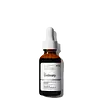What's inside
What's inside
 Key Ingredients
Key Ingredients

 Benefits
Benefits

 Concerns
Concerns

 Ingredients Side-by-side
Ingredients Side-by-side

Water
Skin ConditioningGlycerin
HumectantLecithin
EmollientCaprylic/Capric Triglyceride
MaskingCamellia Japonica Seed Oil
EmollientHydrogenated Lecithin
EmulsifyingHelianthus Annuus Seed Oil
EmollientOryza Sativa Extract
AbsorbentPhyllostachys Pubescens Shoot Bark Extract
Skin ConditioningAspergillus Ferment
Skin ConditioningHyaluronic Acid
HumectantPanax Ginseng Root Extract
EmollientCyclodextrin
AbsorbentSclerotium Gum
Emulsion StabilisingC12-16 Alcohols
EmollientPalmitic Acid
EmollientAlteromonas Ferment Extract
Skin ConditioningUsnea Barbata Extract
Zanthoxylum Piperitum Fruit Extract
Skin ConditioningPulsatilla Koreana Extract
Skin ConditioningBeta-Glucan
Skin Conditioning1,2-Hexanediol
Skin ConditioningGlycine Soja Sterols
EmollientBehenyl Alcohol
EmollientSimmondsia Chinensis Seed Oil
EmollientGlyceryl Stearate
EmollientSodium Phytate
Tocopherol
AntioxidantAdenosine
Skin ConditioningPhenethyl Alcohol
MaskingButylene Glycol
HumectantAlcohol
AntimicrobialLavandula Angustifolia Oil
MaskingLinalool
PerfumingLimonene
PerfumingWater, Glycerin, Lecithin, Caprylic/Capric Triglyceride, Camellia Japonica Seed Oil, Hydrogenated Lecithin, Helianthus Annuus Seed Oil, Oryza Sativa Extract, Phyllostachys Pubescens Shoot Bark Extract, Aspergillus Ferment, Hyaluronic Acid, Panax Ginseng Root Extract, Cyclodextrin, Sclerotium Gum, C12-16 Alcohols, Palmitic Acid, Alteromonas Ferment Extract, Usnea Barbata Extract, Zanthoxylum Piperitum Fruit Extract, Pulsatilla Koreana Extract, Beta-Glucan, 1,2-Hexanediol, Glycine Soja Sterols, Behenyl Alcohol, Simmondsia Chinensis Seed Oil, Glyceryl Stearate, Sodium Phytate, Tocopherol, Adenosine, Phenethyl Alcohol, Butylene Glycol, Alcohol, Lavandula Angustifolia Oil, Linalool, Limonene
Water
Skin ConditioningGlycerin
HumectantCaprylic/Capric Triglyceride
MaskingEthyl Linoleate
EmollientPropanediol
SolventDimethyl Isosorbide
SolventCetearyl Isononanoate
EmollientBisabolol
MaskingHydroxypinacolone Retinoate
Skin ConditioningRetinol
Skin ConditioningTasmannia Lanceolata Fruit/Leaf Extract
AntioxidantInulin Lauryl Carbamate
Emulsion StabilisingGlyceryl Stearate
EmollientCeteareth-12
EmulsifyingCeteareth-20
CleansingCetearyl Alcohol
EmollientCarrageenan
Xanthan Gum
EmulsifyingAcacia Senegal Gum
MaskingCetyl Palmitate
EmollientSucrose Laurate
EmollientPolysorbate 20
EmulsifyingIsoceteth-20
EmulsifyingRosmarinus Officinalis Leaf Extract
AntimicrobialHydroxymethoxyphenyl Decanone
Skin ConditioningBehentrimonium Chloride
PreservativeTrisodium Ethylenediamine Disuccinate
Disodium EDTA
Dehydroacetic Acid
PreservativeBenzoic Acid
MaskingEthylhexylglycerin
Skin ConditioningPhenoxyethanol
PreservativeChlorphenesin
AntimicrobialWater, Glycerin, Caprylic/Capric Triglyceride, Ethyl Linoleate, Propanediol, Dimethyl Isosorbide, Cetearyl Isononanoate, Bisabolol, Hydroxypinacolone Retinoate, Retinol, Tasmannia Lanceolata Fruit/Leaf Extract, Inulin Lauryl Carbamate, Glyceryl Stearate, Ceteareth-12, Ceteareth-20, Cetearyl Alcohol, Carrageenan, Xanthan Gum, Acacia Senegal Gum, Cetyl Palmitate, Sucrose Laurate, Polysorbate 20, Isoceteth-20, Rosmarinus Officinalis Leaf Extract, Hydroxymethoxyphenyl Decanone, Behentrimonium Chloride, Trisodium Ethylenediamine Disuccinate, Disodium EDTA, Dehydroacetic Acid, Benzoic Acid, Ethylhexylglycerin, Phenoxyethanol, Chlorphenesin
 Reviews
Reviews

Ingredients Explained
These ingredients are found in both products.
Ingredients higher up in an ingredient list are typically present in a larger amount.
This ingredient is an emollient, solvent, and texture enhancer. It is considered a skin-softener by helping the skin prevent moisture loss.
It helps thicken a product's formula and makes it easier to spread by dissolving clumping compounds.
Caprylic Triglyceride is made by combining glycerin with coconut oil, forming a clear liquid.
While there is an assumption Caprylic Triglyceride can clog pores due to it being derived from coconut oil, there is no research supporting this.
Learn more about Caprylic/Capric TriglycerideGlycerin is already naturally found in your skin. It helps moisturize and protect your skin.
A study from 2016 found glycerin to be more effective as a humectant than AHAs and hyaluronic acid.
As a humectant, it helps the skin stay hydrated by pulling moisture to your skin. The low molecular weight of glycerin allows it to pull moisture into the deeper layers of your skin.
Hydrated skin improves your skin barrier; Your skin barrier helps protect against irritants and bacteria.
Glycerin has also been found to have antimicrobial and antiviral properties. Due to these properties, glycerin is often used in wound and burn treatments.
In cosmetics, glycerin is usually derived from plants such as soybean or palm. However, it can also be sourced from animals, such as tallow or animal fat.
This ingredient is organic, colorless, odorless, and non-toxic.
Glycerin is the name for this ingredient in American English. British English uses Glycerol/Glycerine.
Learn more about GlycerinGlyceryl Stearate is a mix of glycerin and stearic acid.
It is used to stabilize the mixing of water and oil ingredients. By preventing these ingredients from separating, it can help elongate shelf life. It can also help thicken the product's texture.
As an emollient, it helps soften skin and supports barrier-replenishing ingredients.
In cosmetics, Glyceryl Stearate is often made from vegetable oils or synthetically produced.
This ingredient may not be fungal-acne safe
Fun fact: The human body also creates Glyceryl Stearate naturally.
Learn more about Glyceryl StearateWater. It's the most common cosmetic ingredient of all. You'll usually see it at the top of ingredient lists, meaning that it makes up the largest part of the product.
So why is it so popular? Water most often acts as a solvent - this means that it helps dissolve other ingredients into the formulation.
You'll also recognize water as that liquid we all need to stay alive. If you see this, drink a glass of water. Stay hydrated!
Learn more about Water